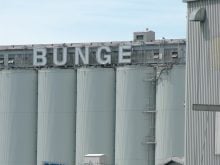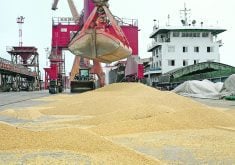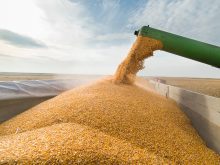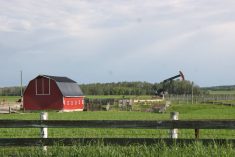BRANDON – Farms and communities on the northern plains have been drying up and blowing away for decades.
But that doesn’t mean continuing decline and depopulation are inevitable, says North Dakota State University historian Tom Isern.
In fact, he believes there will be more farms in 2020 in North Dakota than there are now. However, the new residents will be different.
“It will come in terms of people coming in under the radar,” said Isern, who spoke at the Building Alliances for Recapturing Wealth on the Canadian Prairies conference.
Read Also

Trump’s tariffs take their toll on U.S. producers
U.S. farmers say Trump’s tariffs have been devastating for growers in that country.
“We’re often looking for the wrong things as far as drivers to make a community stable and to build a future for it.”
For instance, “smokestack chasing,” or trying to lure big industrial employers to town, isn’t always the best way to save or secure a community.
Offering people a good community to live in might be a better strategy. That can mean economic revitalization will come from a town offering a good day-care facility rather than a factory, something that has save a number of prairie towns in the United States and Canada.
That’s what happened in Vibank, Sask., Isern said. The hollowed-out town, in which the last business had closed and the school had been shut down, began recovering after the town council bought the shuttered school and opened a day care.
Soon young families began moving into town, seeing it as a wholesome rural community within commuting distance of Regina. New homes are springing up.
Farmers from other parts of the world could also help fill the voids that now exist between farms on the northern plains. But they wouldn’t do things exactly like they’re done today.
“I think there will be a level of opportunity for people, including immigrants, who enter into there, who possess expertise in production techniques that in my family we have forgotten because we gave it all up a generation and a half ago,” said Isern.
“It’s going to be different commodities. They’re not going to be buying quarter-of-a-million-dollar combines.”
Isern said prairie people will have to open their hearts to outsiders, if they wish to see their communities recover and survive.
That means accepting immigrant workers who aren’t exactly like the people in town already.
“If you don’t like this, then you have to go back into the weeds and hunker down,” said Isern.
Being resentful and rejecting people from other cultures will keep prairie people in a state of decline, he said.
The same goes for managers and entrepreneurs who can be lured into rural prairie communities. They need to be welcomed and catered to, not expected to fit in with the way things already are.
“These folks have expectations about the quality of life,” said Isern.
He urged rural people to look to themselves for salvation, because provincial, state and federal governments aren’t going to find ways to save rural communities.
“Federal programs, designed as programs of transition, have fossilized,” said Isern.
A crippling but consistent flaw of prairie thinking is the emphasis on discouragement and despair, Isern said.
But prairie boosterism, which “conceals all problems, highlights all advantages,” is just as damaging.
What prairie communities need is a belief of a future that is hopeful, rather than promotional or resigned.















